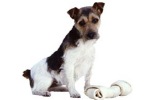
How much do you really know about Alternative or Holistic Dog health Care?
"Finally, All the Information You Need
About
Dog
Health
Care, Dog Training
and
Tips To
Really Spoil Your Pet
Dog
at
a Ridiculously Low Price!"
This Breakthrough Package will Guide you Step-by-Step in every aspect of caring for your pet.
 |
 |
 |
 |
Right now for just $97.00 $67.00
A comprehensive guide to Dog Health Care, Dog Training and Dog Recipes
to help you care for and pamper you beloved pet.
More information for all Dog lovers
DOGS PROBLEMS
How to Get Your Dog Under Control
There are many different types of behavior originally seen as “cute.” A puppy may get away with such things as jumping up on a person. They may nip and nibble their way without serious repercussions - at least for the moment. This cute bundle of milky fur is allowed more lee way than it should. Suddenly, however, the puppy is a young dog. What to do with this now unacceptable behavior?
It is best to forego these problems by instituting training in socially acceptable manors at an early age. When, however, this does not happen, there are ways to handle the problems. This article addresses the issues of biting and chewing for puppies and dogs.
Biting
All puppies bite. They use their teeth when they play. They chomp down on food. They use their teeth to tell you they want to be alone. As the dog grows older, there are 2 basic reasons for biting: injury or pain and fear.
To prevent biting randomly, start training at an early age. If you are playing with your puppy and he or she bites you, react. Even if it causes no pain at all, act as if you are in agony. Overreact with a very large “OW!!!”
Stop playing immediately with the puppy. This will constitute an action-reaction connection. The puppy will associate the stopping of fun and play with his or her actions. This may take time, but the puppy will come to realize he or she cannot bite and play with a human.
With an adult, even a young adult dog, the process is more complicated. If it is fear aggression, you may have to call in an expert. A professional may be able to help you address the dog’s fears. You may also be able to discover the “trigger” mechanism or mechanisms. This could be the influx of too many people, children crowding too close, males, females, a sense of being cornered. Once you know this, it can help you defuse a situation before it starts. You may never be able to eliminate it from your dog, but you can reduce the chances of it occurring by not putting your canine in a situation where it can or may occur.
Chewing
Chewing is another normal type of dog behavior. Puppies chew when they teethe. Dogs and puppies chew because they are bored. There are several ways to address the situation. It is easier to attend to it when they are puppies, but you can prevent many instances in older dogs.
With puppies, you have to introduce them to the concept of non-chewable objects. You must never condone unwanted chewing. A simple way is to keep everything chewable out of reach of a puppy’s mouth. Another way is to distract. You make sure the puppy has plenty of objects to chew. You encourage him to chomp down on certain objects. When he or she has something he or she should not have, you approach. Remove it gently but firmly saying no. you then substitute the forbidden or unsuitable object with a more suitable one.
Some people use bitter sprays on furniture and other objects to prevent chewing. This may work in some instances with puppies and older dogs. Some cases do not have an easy solution. Your dog may be difficult. Sprays may not work. This is where crate training can become beneficial. Your dog is happy and your furniture is safe.
Conclusion
Biting and chewing are behaviors found in small puppies. They are natural. If you do not want them to chew something, you have to teach dogs that the behavior is inappropriate. In doing so, you will maintain some sanity in your home.
Article provided by Sharon Reid of www.ohmydogsupplies.com, where you can find a extraordinary selection of ceramic dog dishes online.
 |
 |
 |
 |
|
Ads By CbproAds |
Dog health care dog treats dog recipes dog health dog training dog breeds dog lovers resources dog care links dog articles dog information